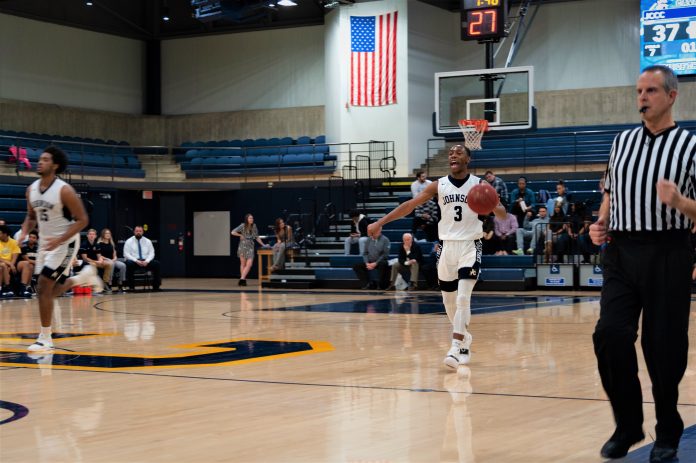
Steven Abramo
Staff reporter
Athletics have been transforming since the college’s start, especially as social media revolutionizes the recruitment process
There’s a saying in life that applies to the college’s athletics well: “Time flies over us but leaves its shadow behind.” No matter how long a journey lasts, the impact and legacy will always follow.
As the college embarks on its 50th year of educating students in the Johnson County community, it’s worth noting the changes, large and small, that have shaped the school’s athletic program.
The first change involves the quantity of sports teams at the college. According to Carl Heinrich, the college’s athletic director from 2000-2017, and the current commissioner of the Kansas Jayhawk Community College Conference (KJCCC), the Cavaliers used to house 12 sports teams as late as the 1980s.
However, in a span of four decades, the team program list has dwindled to seven, with wrestling, tennis, golf, cross country and track-and-field as the latest programs to be discontinued.
“It’s not a fun thing an administrator likes to do,” Heinrich said. “You don’t want to ever eliminate your programs. None of the programs were dropped because we had bad coaches.”
Heinrich said the programs were dropped because of budgetary reasons.
“There was a situation where [President] Sopcich had to reduce his operating budget. There was no way that they were going to increase [any of the] budgets, and the only way was to eliminate [some] programs and keep the other ones we had.”
While the elimination of programs was a negative to the athletic department, the college has come a long way over the years in other areas, such as in training student athletes both during and after the season.
This endeavor reached new heights in 2000, when the college built an indoor training facility, which features an indoor track, three basketball courts and six batting cages.
“The indoor facility was absolutely needed,” Heinrich said. “[Johnson County] has always provided the best facilities of anybody in the state without dorms.”
In addition to the indoor facility, the gymnasium and several outdoor fields have or will undergo facelifts in the future. Notably, an $11.2 million project involving the new soccer and softball fields on the northwest side of campus is nearing completion.
After 50 years of playing their home games in the same venue, the softball program will finally play in an innovative ball park. With new facilities at his fingertips, current Cavalier athletic director, Randy Stange, also hopes the latest upgrades will boost the college’s involvement in athletics, as well as its exposure down the road.
“It’s like the saying ‘If you build it, they will come,’” Stange said. “I think [involvement] naturally will increase. People take a lot of pride in being a part of quality facilities. It’s an exciting time. I’m looking forward to our teams not just hosting college events, but also community events. There’s already a large interest with high school teams playing on our new fields in the future. That’s something we didn’t have before.”
Since taking over as the athletic director in the fall of 2017, Stange notes that another priority on his future to-do list is marketing the college’s sports teams and athletes through social media.
“This year we’ve broadcasted all our sporting events online, so parents and family can go back and watch,” Stange said. “We’ve also made it a requirement to share our videos on Hudl (a site where coaches and athletes can review game footage and improve team play). All of that has opened avenues for us.”
Social media has also lended a hand in recruiting, a process which has been revolutionized as social media grows ever more popular.
In fact, social media was how baseball coach Kent Shelley discovered outfielder Anthony Amicangelo who, before playing at the college, played at Shoreline Community College in Washington.
“This method didn’t exist 15 years ago. It’s saved us a lot of time and money, and it’s opened up a new way of recruiting,” Shelley said, “When I first started here, recruiting was much different. I had to do more traveling back then than I do now. I know enough about social media to be dangerous — that’s why I hired a very young staff that are social-media savvy. I rely on them to use social media effectively.”
Shelley said his three assistant coaches utilize social media to scout high school and other community college baseball players across the country. Thanks to the use of video and recruiting sites, the Cavs staff can hone-in on certain players outside of Kansas and in the Midwest.
This story was featured in our 50th anniversary edition.





















